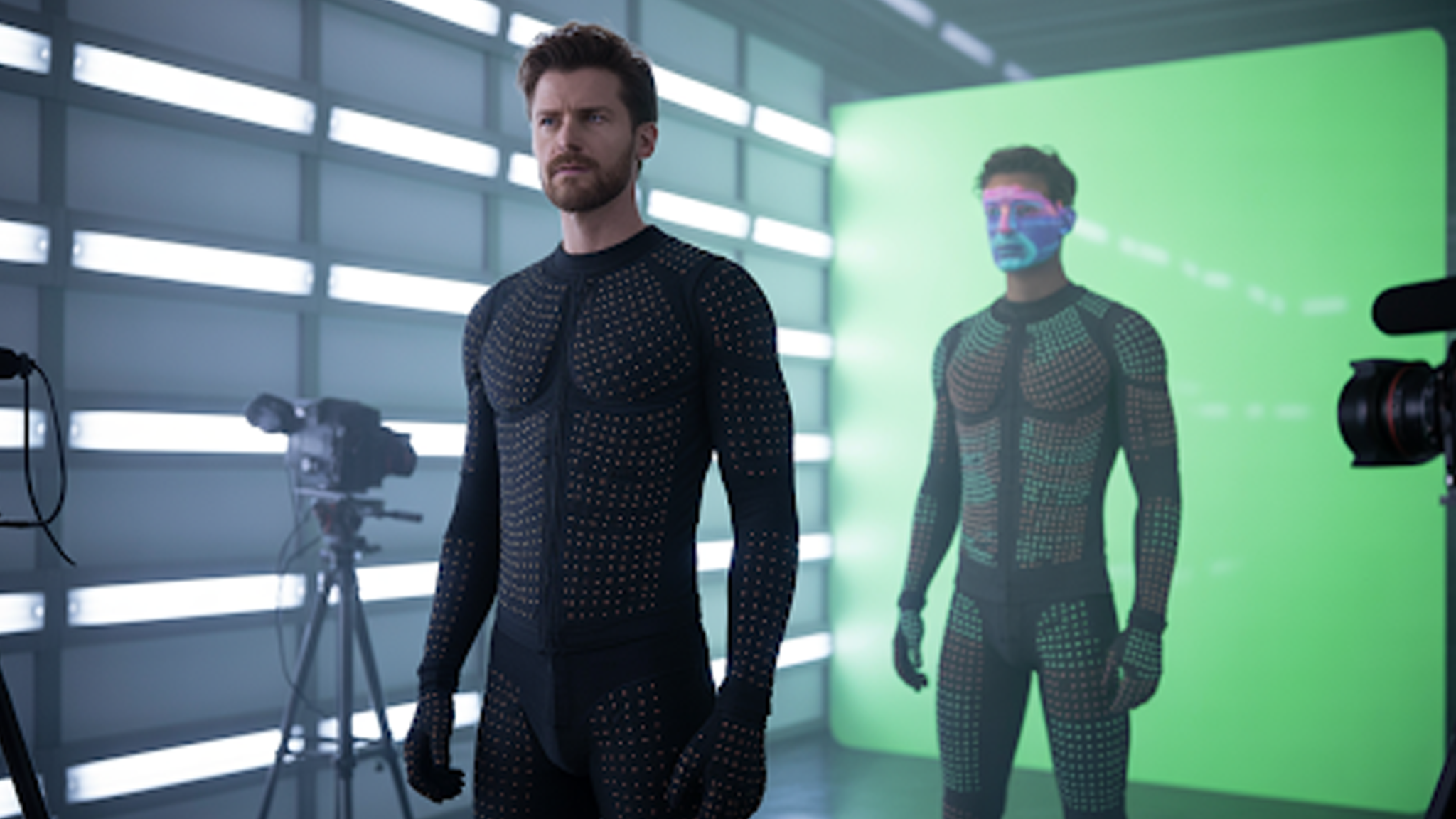Motion capture is the process of turning real movement into digital animation. Actors, athletes, or performers move in front of cameras or sensors, and that motion is mapped onto a virtual character.
This is how films create lifelike creatures, how games feel immersive, and how brands design characters that move in a natural way.
Its importance is simple. Motion capture saves time, captures details that hand animation can miss, and gives projects a sense of realism. It helps animators start with a strong base they can refine to match any style.
That is where AnimatedVideos.co comes in. We take care of the entire motion capture process, from recording to final animation, so you get polished results that fit your project.
How Does Motion Capture Work
Motion capture works by tracking movement through different systems. The most common is optical capture, which uses cameras and reflective markers placed on an actor’s body. The cameras record these markers, and software maps their position in 3D space. This method provides precise, studio-quality data.
Another method is inertial capture, where small sensors are strapped to the actor. These sensors record rotation and movement without the need for cameras, making the system portable and useful for outdoor shoots.
There are also markerless systems that use regular cameras and software to detect body parts. While easier to set up, they are generally less accurate than marker-based methods.
Since each system has its own advantages, it is important to know which one suits your project best. AnimatedVideos.co can guide you through this process and handle the technical side, so the final animation looks realistic, polished, and ready to use in your video, game, or campaign.
Motion Capture Animation Vs Hand Animation
Motion capture animation uses real performance as the base. Hand animation relies on animators building movement frame by frame. Both have value.
Motion capture is fast and realistic. It captures subtle timing and weight. Hand animation gives total control and stylization. For example, a cartoon logo may need exaggerated, playful movement. A 3D visualization of a human athlete may need realistic detail. Most studios mix the two. They use motion capture for the body and polish the face with hand animation. This balance saves time and gives strong results.
Where Motion Capture Is Used
Motion capture shines where realism or nuance matters.
- Film and TV: Motion capture brings creatures and humans to life. Famous roles like Gollum or many modern superheroes were made possible with performance capture.
- Games and VR: Studios capture stunts, fighting moves, and crowd movement. This makes gameplay feel more natural. In VR, lifelike movement adds immersion.
- Advertising: Brands use motion capture for short animated spots. It allows mascots or products to move in a way that feels natural and quick to produce. Pairing mocap with 3D visualization makes product videos more engaging.
- Sports and Medicine: Motion capture tracks athletes, studies performance, and helps prevent injuries. Doctors and therapists also use it to measure movement in rehab.
How To Choose The Right Capture Method
- The right capture method depends on your needs, budget, and location.
- Optical capture is best for high-precision projects in controlled studios. It works well for film, high-end games, or any detailed performance.
- Inertial capture suits outdoor shoots, larger spaces, or when portability matters. It is cheaper than optical systems and faster to set up.
- Markerless capture works for quick sessions or when budgets are tight. It is less accurate but improving fast. Many small teams use it for prototypes or background animation.
What To Expect In A Motion Capture Project
A motion capture project has clear stages: planning, capture, cleanup, retargeting, and delivery. Costs vary based on scope. A simple session may cost a few hundred dollars. A larger studio shoot with facial and hand capture costs much more.
Timelines also depend on complexity. A short ad spot may be done in days. A longer film sequence may take weeks because of cleanup and review.
Deliverables often include cleaned motion files like FBX or BVH, plus a rendered animation. At AnimatedVideos.co, we deliver both raw data and polished final clips. That way you can use them in games, ads, or film pipelines.
How To Prepare For A Motion Capture Session
Preparing well for a motion capture session makes the process smoother and prevents costly delays. A little planning before the shoot can save hours of work later.
- Write a clear script with short, simple scenes
- Choose an actor who matches the performance needs
- Rehearse before capture to reduce retakes
- Keep props simple and avoid shiny costumes for optical systems
- Record reference video for checking timing and emotion
- Run a short test capture to confirm calibration and catch errors early
How AnimatedVideos.co Can Help You
AnimatedVideos.co delivers motion capture projects that fit your style and budget. We offer full studio capture, portable setups, and remote support. We can give you raw data or a finished, polished animation.
Our team adapts motion to your needs. We can create realistic movement, playful cartoon timing, or cinematic drama. We also handle 3D visualization and stylization so your project looks right on any platform.
Send us your script or brand brief. We will propose the best capture method, timeline, and price. You get a clear plan and animation ready to use.
Common Problems And Professional Fixes
Motion capture is powerful but not perfect. Markers can shift. Sensors can drift. Markerless systems can misread limbs in complex movement.
Professionals know how to fix these. They run short takes, recalibrate often, and clean the data afterward. Sometimes, animators add hand animation to smooth out issues. This combination gives a performance that feels natural and complete.
The Future Of Motion Capture In 3D Animation
Motion capture will become more portable and accurate. Machine learning is improving markerless tracking. Suits will get lighter. Software will reduce cleanup time.
Studios will keep blending mocap with hand animation. This hybrid approach balances speed and creativity. As tools become cheaper, more creators will use motion capture for YouTube videos, indie games, and ads. It is set to shape the future of 3D animation in every industry.
FAQs
What is motion capture and why is it important?
Motion capture records human movement and applies it to digital characters. It is important because it creates realistic animation and reduces the time needed for manual work. This makes it a standard in film, games, and advertising.
How does motion capture recording work?
Recording is done using optical cameras, inertial sensors, or markerless systems. Each tracks body movement and translates it into usable digital data. The method depends on the project and setup.
Why do actors wear suits with dots during filming?
The dots are reflective markers used in optical systems. Cameras track them in 3D space to capture body motion. This data drives digital characters in movies and games.
What makes motion capture better than hand animation?
Motion capture captures small details like timing, weight, and emotion. Hand animation takes much longer and may miss natural nuance. Mocap gives animators a strong base they can refine.
Where is motion capture used besides movies?
It is used in video games, sports training, medicine, and advertising. Motion capture helps study body mechanics, train athletes, and design realistic digital content.
Why choose AnimatedVideos.co for motion capture projects?
A specialist team handles everything from setup to final animation. AnimatedVideos.co delivers polished motion data and lifelike results. This saves time and gives you a product ready to use.
How does motion capture improve ads and branding?
It creates characters that move naturally and engage audiences. AnimatedVideos.co builds custom mascots or branded characters with mocap, helping businesses stand out in crowded markets.
What should be prepared before a mocap session?
A clear script, suitable actors, and simple props are essential. Rehearsals reduce mistakes, and a test capture confirms calibration. Preparation ensures smoother production.
Why is motion capture shaping the future of 3D animation?
It combines real human performance with digital design. This creates believable characters and immersive worlds. Motion capture is becoming the foundation of modern 3D animation.
Conclusion
Motion capture is one of the most effective ways to bring digital characters to life. It saves time, adds realism, and blends well with hand animation. From films to ads to sports, it has become a standard tool.
If you want motion capture without the stress, AnimatedVideos.co can run the process for you. We handle the tech and polish the results so you get animation that fits your project. Share your idea with us and see how motion capture can turn movement into story.



